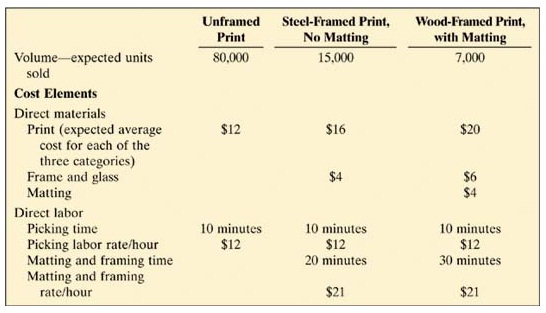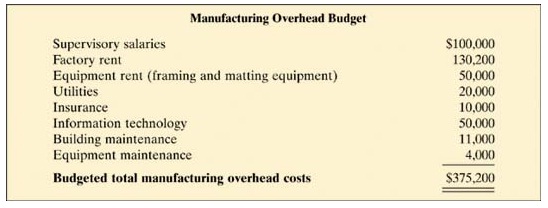THE BUSINESS SITUATION:
Greetings Inc. has operated for many years as a nationally recognized retailer of greeting cards and small gift items. It has 1,500 stores throughout the United States located in high-traffic malls.
As the stock price of many other companies soared, Greetings' stock price remained flat. As a result of a heated 2007 shareholders' meeting, the president of Greetings, Robert Burns, came under pressure from shareholders to grow Greetings' stock value. As a consequence of this pressure, in 2008 Mr. Burns called for a formal analysis of the company's options with regard to business opportunities.
Location was the first issue considered in the analysis. Greetings stores are located in high-traffic malls where rental costs are high. The additional rental cost was justified, however, by the revenue that resulted from these highly visible locations. In recent years, though, the intense competition from other stores in the mall selling similar merchandise has become a disadvantage of the mall locations.
Mr. Burns felt that to increase revenue in the mall locations, Greetings would need to attract new customers and sell more goods to repeat customers. In order to do this, the company would need to add a new product line. However, to keep costs down, the product line should be one that would not require much additional store space. In order to improve earnings, rather than just increase revenues, Greetings would have to carefully manage the costs of this new product line.
After careful consideration of many possible products, the company's management found a product that seemed to be a very good strategic fit for its existing products: high-quality unframed and framed prints. The critical element of this plan was that customers would pick out prints by viewing them on wide-screen computer monitors in each store. Orders would be processed and shipped from a central location. Thus, store size would not have to increase at all. To offer these products, Greetings established a new e-business unit called Wall Décor. Wall Décor is a “profit center”; that is, the manager of the new business unit is responsible for decisions affecting both revenues and costs.
Wall Décor was designed to distribute unframed and framed print items to each Greetings store on a just-in-time (JIT) basis. The system works as follows: The Wall Décor website allows customers to choose from several hundred prints. The print can be purchased in various forms: unframed, framed with a metal frame and no matting, or framed with a wood frame and matting. When a customer purchases an unframed print, it is packaged and shipped the same day from Wall Décor. When a customer purchases a framed print, the print is framed at Wall Décor and shipped within 48 hours.
Each Greetings store has a computer linked to Wall Décor's Web server so Greetings customers can browse the many options to make a selection. Once a selection is made, the customer can complete the order immediately. Store employees are trained to help customers use the website and complete the purchase. The advantage to this approach is that each Greetings store, through the Wall Décor website, can offer a wide variety of prints, yet the individual Greetings stores do not have to hold any inventory of prints or framing materials. About the only cost to the individual store is the computer and high-speed line connection to Wall Décor. The advantage to the customer is the wide variety of unframed and framed print items that can be conveniently purchased and delivered to the home or business, or to a third party as a gift.
Wall Décor uses a traditional job-order costing system. Operation of Wall Décor would be substantially less complicated, and overhead costs would be substantially less, if it sold only unframed prints. Unframed prints require no additional processing, and they can be easily shipped in simple protective tubes. Framing and matting requires the company to have multiple matting colors and frame styles, which requires considerable warehouse space. It also requires skilled employees to assemble the products and more expensive packaging procedures.
Manufacturing overhead is allocated to each unframed or framed print, based on the cost of the print. This overhead allocation approach is based on the assumption that more expensive prints will usually be framed and therefore more overhead costs should be assigned to these items. The predetermined overhead rate is the total expected manufacturing overhead divided by the total expected cost of prints. This method of allocation appeared reasonable to the accounting team and distribution floor manager. Direct labor costs for unframed prints consist of picking the prints off the shelf and packaging them for shipment. For framed prints, direct labor costs consist of picking the prints, framing, matting, and packaging.
The information in Illustration below for unframed and framed prints was collected by the accounting and production teams. The manufacturing overhead budget is presented below.
EXERCISES:
Instructions:
Make use of the information in the case and your reading from Chapters of the text to answer each of the questions illustrated below:


Question 1: Define and explain the meaning of a predetermined manufacturing overhead rate that is applied in a job-order costing system.
Question 2: What are the advantages and disadvantages of using the cost of each print as a manufacturing overhead cost driver?
Question 3: Using the information on the next page, compute and interpret the predetermined manufacturing overhead rate for Wall Décor.
Question 4: Compute the product cost for the following three items.
(a) Lance Armstrong unframed print (base cost of print $12).
(b) John Elway print in steel frame, no mat (base cost of print $16).
(c) Lambeau Field print in wood frame with mat (base cost of print $20).
Question 5:
(a) How much of the total overhead cost is expected to be allocated to unframed prints?
(b) How much of the total overhead cost is expected to be allocated to steel framed prints?
(c) How much of the total overhead cost is expected to be allocated to wood framed prints?
(d) What percentage of the total overhead cost is expected to be allocated to unframed prints?
Question 6: Do you think the amount of overhead allocated to the three product categories is reasonable? Relate your response to this question to your findings in previous questions.
Question 7: Anticipate business problems that may result from allocating manufacturing overhead based on the cost of the prints.